This is a tree that is not well known “on the ground” but whose fruits have a certain value throughout the Indo-Malaysian area. It is indeed a large tree (50m) of the dense humid forests whose limits are pushed back always further from the inhabited zones. Its large leaves are compound, grouped at the end of each branch; the leaflets are oblong, smooth, pink when they are young, of a beautiful bright green when mature. The flowers are grouped in panicles at the end of the branch at the axis of the leaflets; they are in the shape of a closed bell, white or greenish with a light perfume. The fruits are small green drupes, round, hanging like the mangoes which are of the same family; the endocarp or nucleus is formed by five compartments each containing a seed.
It is its fruit that gives the name to this plant. The scientific name comes from the Greek drakôn, “dragon” and mêlon, apple; the epithet dao, is the name of the tree in the Philippines probably reinterpreted in Thai; in English, we speak of “Pacific nut”; the Lao name is descriptive with a certain exaggeration: sène ta lòm, “a hundred thousand eyes around” to say the five cavities around the core.
This fruit is edible but nibbled mostly by children; the almonds can also be eaten after being roasted. In Papua New Guinea the flowers and young leaves are cooked as vegetables. The wood is used to make small furniture and frames. In the Philippines, the bark, leaves and flowers are used to prepare infusions against dysentery.
If this fruit is not appreciated, it is not the same for its kernel which, in addition to its gustatory value has a strong aesthetic and especially magical potential. In China, this stone is compared to the human face and women who want to have children must hold it in their right hand on odd days and in their left hand on even days. In Laos and Thailand, Dracontomelon dao has a strong symbolic value; indeed, the five divisions of the kernel are seen as the representation of five Buddhas, moreover, in Chiang Mai, the plant is called phra chao ha phra ong (“the five divine powers”) royal and divine honorific title. In the markets mak sène ta lòm is sold as a good luck charm; it can also be blessed by a monk to strengthen its protective powers. In recent years, there are also decorative objects made from these stones for tourists.
Voilà un arbre que l’on connaît mal « sur pied » mais dont les fruits ont une valeur certaine un peu partout dans la zone indo malaise. Il s’agit en effet d’un grand arbre (50m) des forêts denses humides dont les limites sont repoussées toujours plus loin des zones habitées. Ses grandes feuilles sont composées, groupées en bout de chaque rameau; les folioles sont oblongues, lisses, roses quand elles sont jeunes, d’un beau vert brillant à maturité. Les fleurs sont groupées en panicule en bout de branche à l’axe des folioles; elles sont en forme de cloche refermée, blanches ou verdâtres avec un léger parfum. Les fruits sont de petites drupes vertes, rondes, pendantes à la façon des mangues qui sont de la même famille; l’endocarpe ou noyau est formé de cinq compartiments contenant chacun une graine.
C’est son fruit qui induit les noms de cette plante. Le nom scientifique vient du grec drakôn, « dragon » et mêlon, pomme; l’épithète dao, est le nom de l’arbre aux Philippines sans doute réinterprété en thaï; en anglais on parle de « noix du Pacifique »; le nom lao est descriptif avec une certaine exagération: sène ta lòm, « cent mille yeux autour » pour dire les cinq cavités autour du noyau.
Ce fruit est comestible mais grignoté surtout par les enfants; les amandes peuvent aussi être mangées après avoir été grillées. En Papouasie Nouvelle Guinée, les fleurs et les jeunes feuilles sont cuites comme légumes. Le bois est employé pour faire de petits meubles et des huisseries. Aux Philippines, l’écorce, les feuilles et les fleurs permettent de préparer des infusions contre la dysenterie.
Si ce fruit n’est pas apprécié, il n’en n’est pas de même pour son noyau qui, en plus d’une valeur gustative a un fort potentiel esthétique et surtout magique. En Chine, on compare ce noyau au visage humain et les femmes qui veulent avoir des enfants doivent le tenir dans la main droite les jours impairs et dans la main gauche les jours pairs. Au Laos et en Thaïlande, Dracontomelon dao a une forte valeur symbolique; en effet, les cinq divisions du noyau sont vues comme la représentation de cinq Bouddha, d’ailleurs à Chiang Mai on nomme la plante phra chao ha phra ong (« les cinq puissances divines ») titre honorifique royal et divin. Sur les marchés mak sène ta lòm est vendu comme porte-bonheur; on peut aussi le faire bénir par un bonze pour renforcer ses pouvoirs de protection. Depuis quelques années, on trouve aussi des objets décoratifs fabriqués pour les touristes avec ces noyaux.
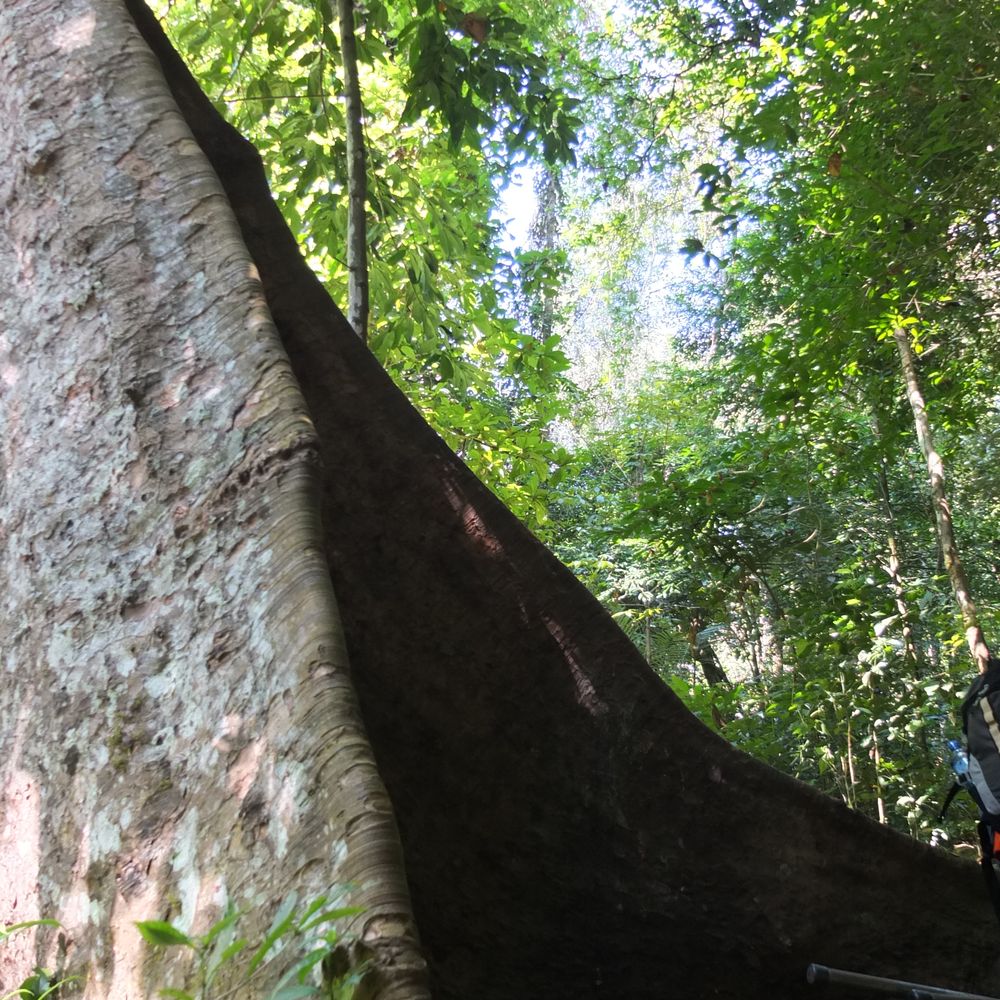
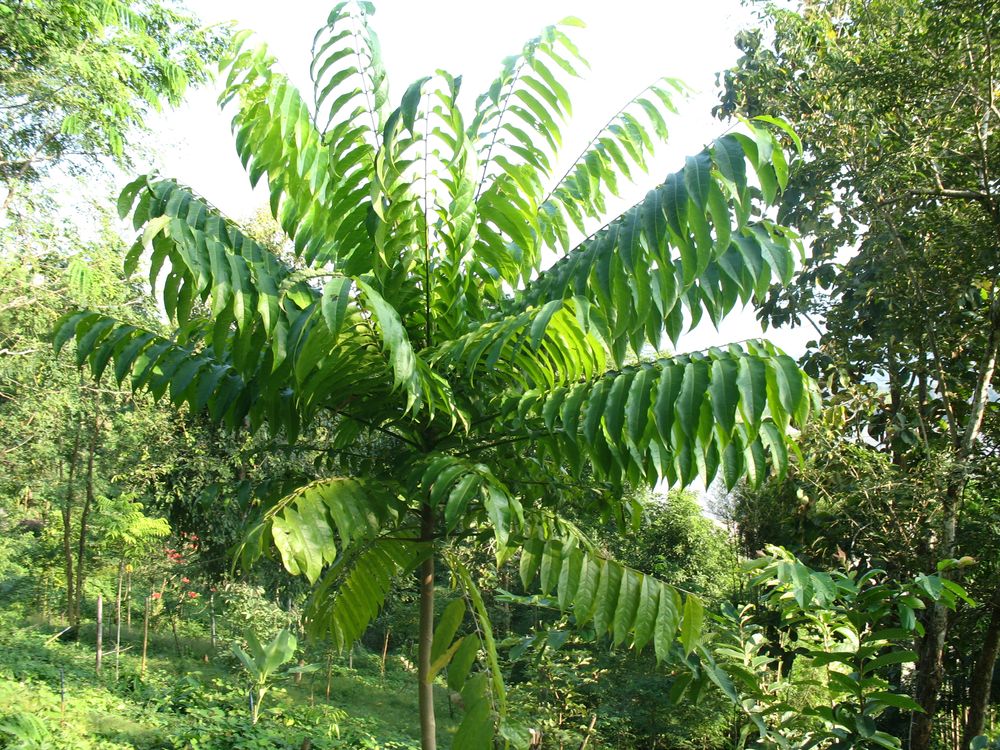
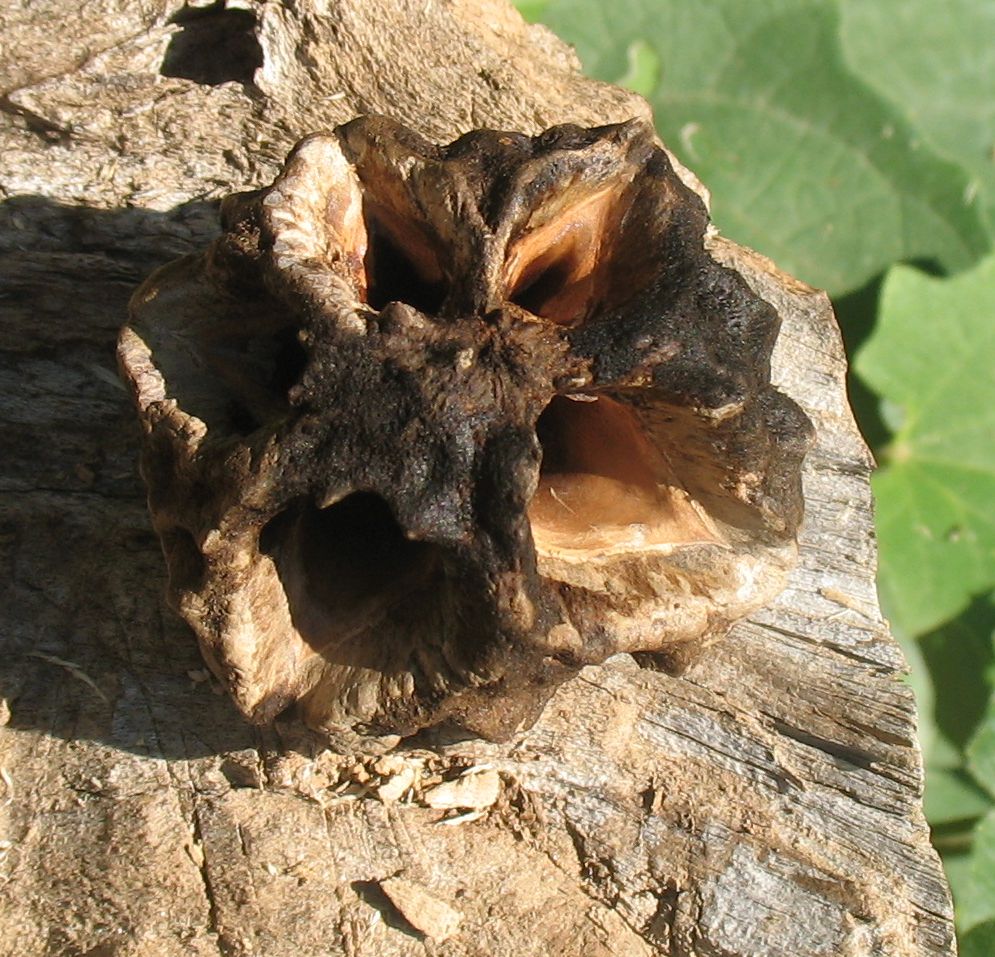
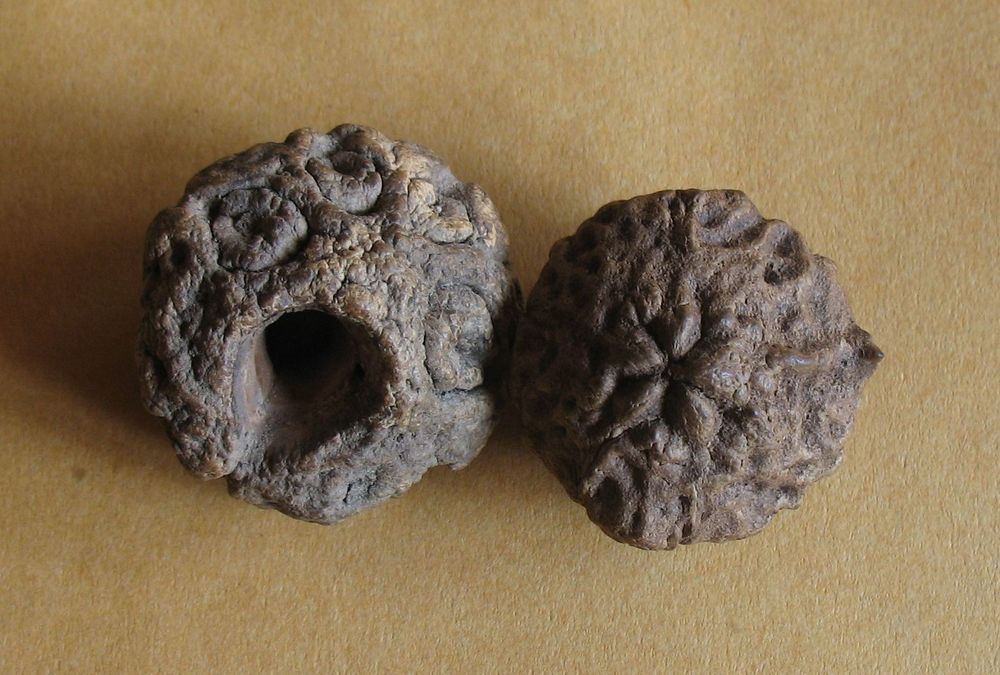
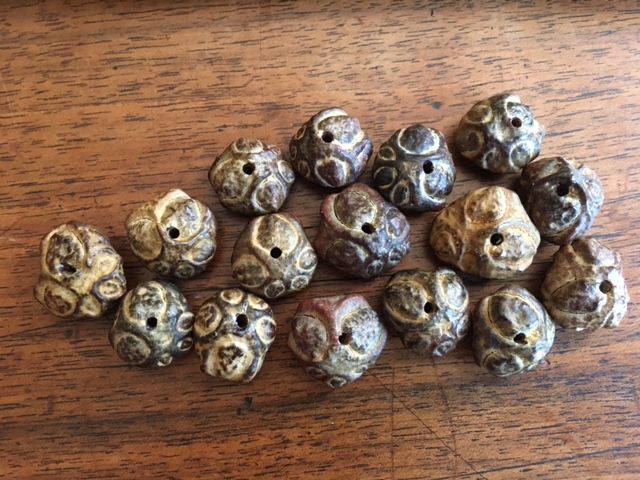
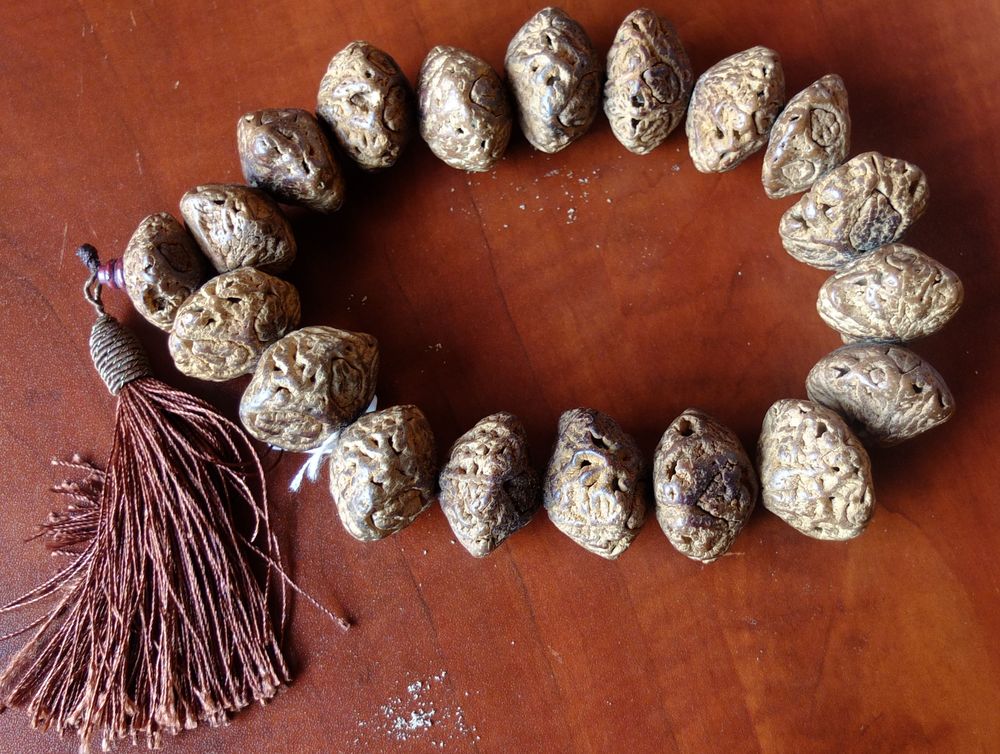
This is a tree that is not well known “on the ground” but whose fruits have a certain value throughout the Indo-Malaysian area. It is indeed a large tree (50m) of the dense humid forests whose limits are pushed back always further from the inhabited zones. Its large leaves are compound, grouped at the end of each branch; the leaflets are oblong, smooth, pink when they are young, of a beautiful bright green when mature. The flowers are grouped in panicles at the end of the branch at the axis of the leaflets; they are in the shape of a closed bell, white or greenish with a light perfume. The fruits are small green drupes, round, hanging like the mangoes which are of the same family; the endocarp or nucleus is formed by five compartments each containing a seed.
It is its fruit that gives the name to this plant. The scientific name comes from the Greek drakôn, “dragon” and mêlon, apple; the epithet dao, is the name of the tree in the Philippines probably reinterpreted in Thai; in English, we speak of “Pacific nut”; the Lao name is descriptive with a certain exaggeration: sène ta lòm, “a hundred thousand eyes around” to say the five cavities around the core.
This fruit is edible but nibbled mostly by children; the almonds can also be eaten after being roasted. In Papua New Guinea the flowers and young leaves are cooked as vegetables. The wood is used to make small furniture and frames. In the Philippines, the bark, leaves and flowers are used to prepare infusions against dysentery.
If this fruit is not appreciated, it is not the same for its kernel which, in addition to its gustatory value has a strong aesthetic and especially magical potential. In China, this stone is compared to the human face and women who want to have children must hold it in their right hand on odd days and in their left hand on even days. In Laos and Thailand, Dracontomelon dao has a strong symbolic value; indeed, the five divisions of the kernel are seen as the representation of five Buddhas, moreover, in Chiang Mai, the plant is called phra chao ha phra ong (“the five divine powers”) royal and divine honorific title. In the markets mak sène ta lòm is sold as a good luck charm; it can also be blessed by a monk to strengthen its protective powers. In recent years, there are also decorative objects made from these stones for tourists.
Voilà un arbre que l’on connaît mal « sur pied » mais dont les fruits ont une valeur certaine un peu partout dans la zone indo malaise. Il s’agit en effet d’un grand arbre (50m) des forêts denses humides dont les limites sont repoussées toujours plus loin des zones habitées. Ses grandes feuilles sont composées, groupées en bout de chaque rameau; les folioles sont oblongues, lisses, roses quand elles sont jeunes, d’un beau vert brillant à maturité. Les fleurs sont groupées en panicule en bout de branche à l’axe des folioles; elles sont en forme de cloche refermée, blanches ou verdâtres avec un léger parfum. Les fruits sont de petites drupes vertes, rondes, pendantes à la façon des mangues qui sont de la même famille; l’endocarpe ou noyau est formé de cinq compartiments contenant chacun une graine.
C’est son fruit qui induit les noms de cette plante. Le nom scientifique vient du grec drakôn, « dragon » et mêlon, pomme; l’épithète dao, est le nom de l’arbre aux Philippines sans doute réinterprété en thaï; en anglais on parle de « noix du Pacifique »; le nom lao est descriptif avec une certaine exagération: sène ta lòm, « cent mille yeux autour » pour dire les cinq cavités autour du noyau.
Ce fruit est comestible mais grignoté surtout par les enfants; les amandes peuvent aussi être mangées après avoir été grillées. En Papouasie Nouvelle Guinée, les fleurs et les jeunes feuilles sont cuites comme légumes. Le bois est employé pour faire de petits meubles et des huisseries. Aux Philippines, l’écorce, les feuilles et les fleurs permettent de préparer des infusions contre la dysenterie.
Si ce fruit n’est pas apprécié, il n’en n’est pas de même pour son noyau qui, en plus d’une valeur gustative a un fort potentiel esthétique et surtout magique. En Chine, on compare ce noyau au visage humain et les femmes qui veulent avoir des enfants doivent le tenir dans la main droite les jours impairs et dans la main gauche les jours pairs. Au Laos et en Thaïlande, Dracontomelon dao a une forte valeur symbolique; en effet, les cinq divisions du noyau sont vues comme la représentation de cinq Bouddha, d’ailleurs à Chiang Mai on nomme la plante phra chao ha phra ong (« les cinq puissances divines ») titre honorifique royal et divin. Sur les marchés mak sène ta lòm est vendu comme porte-bonheur; on peut aussi le faire bénir par un bonze pour renforcer ses pouvoirs de protection. Depuis quelques années, on trouve aussi des objets décoratifs fabriqués pour les touristes avec ces noyaux.












This is a tree that is not well known “on the ground” but whose fruits have a certain value throughout the Indo-Malaysian area. It is indeed a large tree (50m) of the dense humid forests whose limits are pushed back always further from the inhabited zones. Its large leaves are compound, grouped at the end of each branch; the leaflets are oblong, smooth, pink when they are young, of a beautiful bright green when mature. The flowers are grouped in panicles at the end of the branch at the axis of the leaflets; they are in the shape of a closed bell, white or greenish with a light perfume. The fruits are small green drupes, round, hanging like the mangoes which are of the same family; the endocarp or nucleus is formed by five compartments each containing a seed.
It is its fruit that gives the name to this plant. The scientific name comes from the Greek drakôn, “dragon” and mêlon, apple; the epithet dao, is the name of the tree in the Philippines probably reinterpreted in Thai; in English, we speak of “Pacific nut”; the Lao name is descriptive with a certain exaggeration: sène ta lòm, “a hundred thousand eyes around” to say the five cavities around the core.
This fruit is edible but nibbled mostly by children; the almonds can also be eaten after being roasted. In Papua New Guinea the flowers and young leaves are cooked as vegetables. The wood is used to make small furniture and frames. In the Philippines, the bark, leaves and flowers are used to prepare infusions against dysentery.
If this fruit is not appreciated, it is not the same for its kernel which, in addition to its gustatory value has a strong aesthetic and especially magical potential. In China, this stone is compared to the human face and women who want to have children must hold it in their right hand on odd days and in their left hand on even days. In Laos and Thailand, Dracontomelon dao has a strong symbolic value; indeed, the five divisions of the kernel are seen as the representation of five Buddhas, moreover, in Chiang Mai, the plant is called phra chao ha phra ong (“the five divine powers”) royal and divine honorific title. In the markets mak sène ta lòm is sold as a good luck charm; it can also be blessed by a monk to strengthen its protective powers. In recent years, there are also decorative objects made from these stones for tourists.
Voilà un arbre que l’on connaît mal « sur pied » mais dont les fruits ont une valeur certaine un peu partout dans la zone indo malaise. Il s’agit en effet d’un grand arbre (50m) des forêts denses humides dont les limites sont repoussées toujours plus loin des zones habitées. Ses grandes feuilles sont composées, groupées en bout de chaque rameau; les folioles sont oblongues, lisses, roses quand elles sont jeunes, d’un beau vert brillant à maturité. Les fleurs sont groupées en panicule en bout de branche à l’axe des folioles; elles sont en forme de cloche refermée, blanches ou verdâtres avec un léger parfum. Les fruits sont de petites drupes vertes, rondes, pendantes à la façon des mangues qui sont de la même famille; l’endocarpe ou noyau est formé de cinq compartiments contenant chacun une graine.
C’est son fruit qui induit les noms de cette plante. Le nom scientifique vient du grec drakôn, « dragon » et mêlon, pomme; l’épithète dao, est le nom de l’arbre aux Philippines sans doute réinterprété en thaï; en anglais on parle de « noix du Pacifique »; le nom lao est descriptif avec une certaine exagération: sène ta lòm, « cent mille yeux autour » pour dire les cinq cavités autour du noyau.
Ce fruit est comestible mais grignoté surtout par les enfants; les amandes peuvent aussi être mangées après avoir été grillées. En Papouasie Nouvelle Guinée, les fleurs et les jeunes feuilles sont cuites comme légumes. Le bois est employé pour faire de petits meubles et des huisseries. Aux Philippines, l’écorce, les feuilles et les fleurs permettent de préparer des infusions contre la dysenterie.
Si ce fruit n’est pas apprécié, il n’en n’est pas de même pour son noyau qui, en plus d’une valeur gustative a un fort potentiel esthétique et surtout magique. En Chine, on compare ce noyau au visage humain et les femmes qui veulent avoir des enfants doivent le tenir dans la main droite les jours impairs et dans la main gauche les jours pairs. Au Laos et en Thaïlande, Dracontomelon dao a une forte valeur symbolique; en effet, les cinq divisions du noyau sont vues comme la représentation de cinq Bouddha, d’ailleurs à Chiang Mai on nomme la plante phra chao ha phra ong (« les cinq puissances divines ») titre honorifique royal et divin. Sur les marchés mak sène ta lòm est vendu comme porte-bonheur; on peut aussi le faire bénir par un bonze pour renforcer ses pouvoirs de protection. Depuis quelques années, on trouve aussi des objets décoratifs fabriqués pour les touristes avec ces noyaux.


